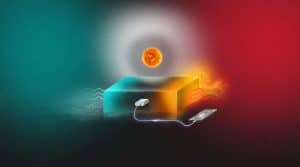
The researchers behind an energy system that makes it possible to capture solar energy, store it for up to 18 years and release it when and where it is needed have now taken the system a step further. After previously demonstrating how the energy can be extracted as heat, they have now succeeded in getting the system to produce electricity, by connecting it to a thermoelectric generator. Eventually, the research—developed at Chalmers University of Technology, Sweden—could lead to self-charging electronics using stored solar energy on demand.
“This is a radically new way of generating electricity from solar energy. It means that we can use solar energy to produce electricity regardless of weather, time of day, season, or geographical location. It is a closed system that can operate without causing carbon dioxide emissions,” says research leader Kasper Moth-Poulsen, Professor at the Department of Chemistry and Chemical Engineering at Chalmers.
The new technology is based on the solar energy system MOST—molecular solar thermal energy storage systems—developed at Chalmers University of Technology. Very simply, the technology is based on a specially designed molecule that changes shape when it comes into contact with sunlight. The research has already attracted great interest worldwide when it has been presented at earlier stages.
The new study, published in Cell Reports Physical Science and carried out in collaboration with researchers in Shanghai, takes the solar energy system a step further, detailing how it can be combined with a compact thermoelectric generator to convert solar energy into electricity.
Ultra-thin chip converts heat into electricity
The Swedish researchers sent their specially designed molecule, loaded with solar energy, to colleagues Tao Li and Zhiyu Hu at Shanghai Jiao Tong University, where the energy was released and converted into electricity using the generator they developed there. Essentially, Swedish sunshine was sent to the other side of the world and converted into electricity in China.
“The generator is an ultra-thin chip that could be integrated into electronics such as headphones, smart watches and telephones. So far, we have only generated small amounts of electricity, but the new results show that the concept really works. It looks very promising,” says researcher Zhihang Wang from Chalmers University of Technology.
Fossil free, emissions free
The research has great potential for renewable and emissions-free energy production. But a lot of research and development remains before we will be able to charge our technical gadgets or heat our homes with the system’s stored solar energy.
“Together with the various research groups included in the project, we are now working to streamline the system. The amount of electricity or heat it can extract needs to be increased. Even if the energy system is based on simple basic materials, it needs to be adapted to be sufficiently cost-effective to produce, and thus possible to launch more broadly,” says Kasper Moth-Poulsen.
